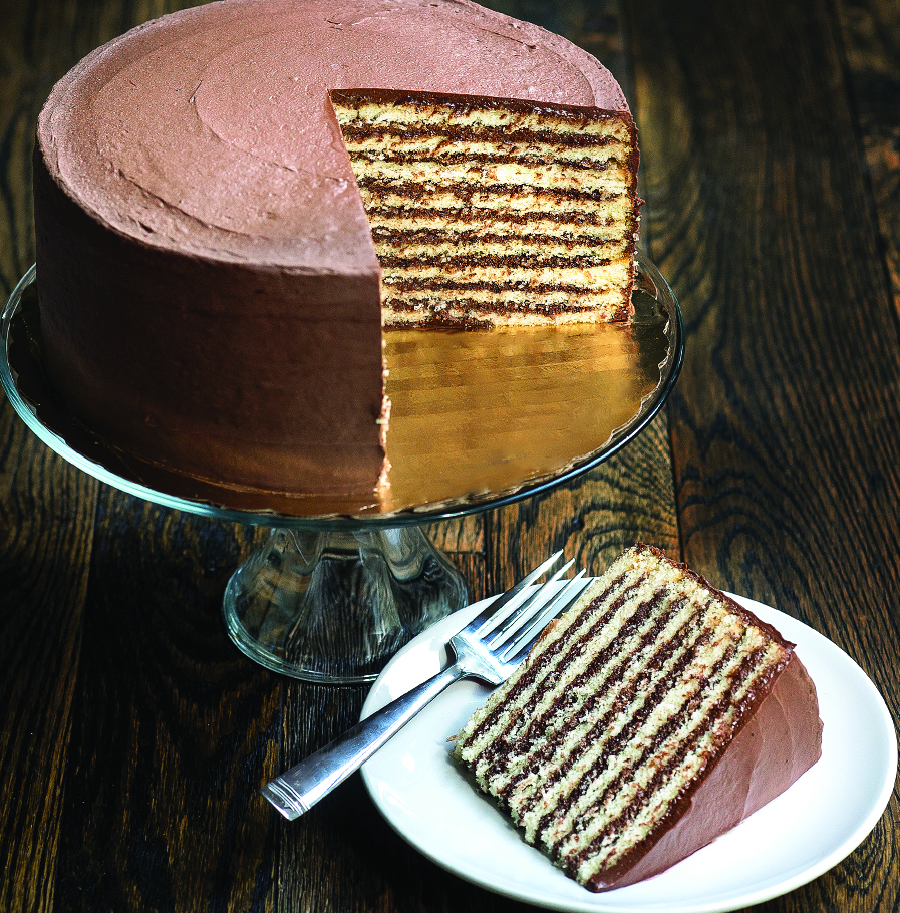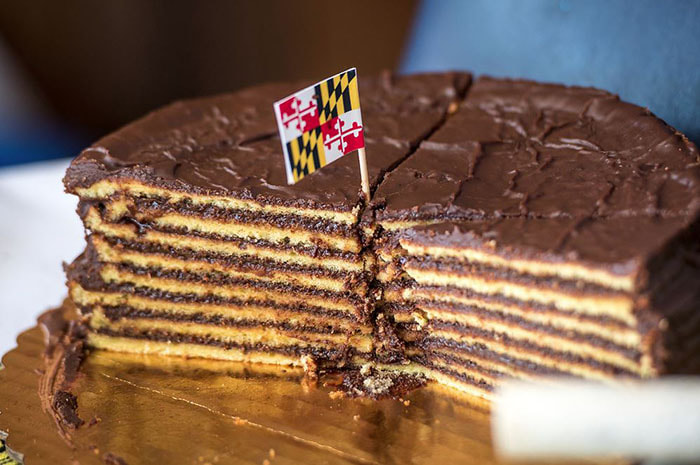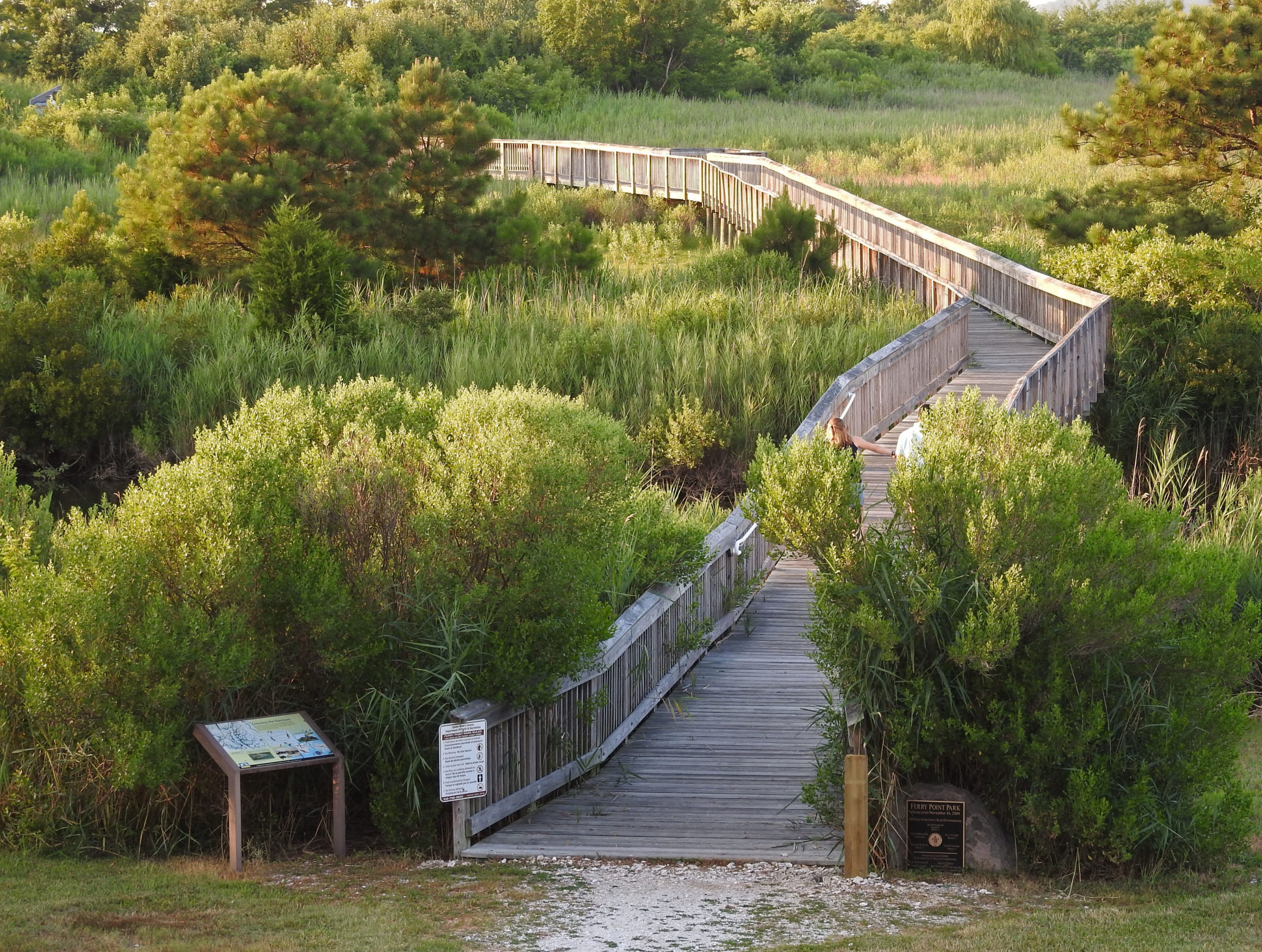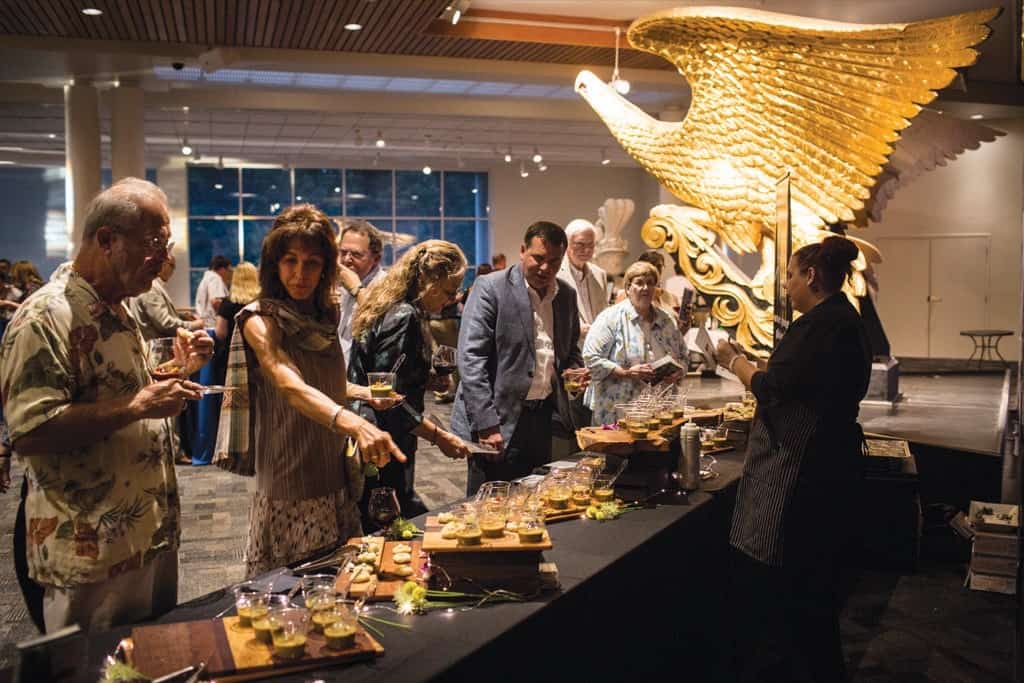Roadside historical markers are nothing new in Chesapeake Country. But a new marker going up on Smith Island, Md., will pay homage to a sweet piece of history.
Maryland’s official state dessert, Smith Island cake, will be recognized for its historic significance with a marker funded by the William G. Pomeroy Foundation’s Hungry for History Program, which supports and celebrates vernacular foods and their places in community history.
The grant for the marker, provided to Smith Island United, did not come without some challenges. In order to qualify for the Hungry for History Program, an authentic food must be at least 50 years old.
SMITH ISLAND CAKE
PROCLAIMED MARYLAND
STATE DESSERT IN 2008,
THE 8 – 10 LAYER CAKE HAS
BEEN A TRADITION ON THIS
ISLAND SINCE CA. 1900.
WILLIAM G. POMEROY FOUNDATION 2023
Because the cake was not officially documented prior to the second printing of Mrs. Kitching’s Smith Island Cookbook the request was initially denied. The Beach to Bay Heritage Area stepped in to assist the community and went to work tracking down the recipe’s date of birth.
Handwritten letters from Smith Island bakers Mary Ada Marshall and Janice Marshall were integral to tracing the cake’s history. Their letters recalled memories of them helping to bake the cakes with their grandmothers and mothers, clearly placing the cake’s history well beyond the 50-year mark.
Mary Ada Marshall made her first cake when she was 11 years old. “I’m honored to know that it [the marker] is going up there,” she told Chesapeake Bay Magazine this week. “I’m real proud of it. I put a lot of time into the process, baking and going up to Annapolis to get it certified [as Maryland’s state dessert]. I didn’t invent it. Our grandmothers did, but I played a role. I’m tickled to death. It makes me feel good.”

Smith Island, now the only inhabited offshore island in Maryland’s part of the Chesapeake Bay, is a watermen’s community where at least five generations of wives have baked cakes for their husbands to take aboard their workboats, which often had no refrigeration. In winter, they might be out for up to five days, dredging oysters. In summer, they put in long days crabbing. The work was hard, pulling dredges and pots in all weather, and they burned plenty of calories. Island cooks created this dessert with seven to ten thin layers of yellow cake, with chocolate frosting liberally applied between the layers and over the entire cake. The layers of chocolate frosting kept the cakes moist, and the sugar provided plenty of energy. In addition, baking thin layers was easier on wood stoves, which predominated on the island until the advent of electricity in the 1950s.
Beloved by watermen, the cakes became standard fare for weddings, picnics, funerals, church events, or just everyday consumption. Island households welcomed any visitor with a slice of cake, a cup of coffee or glass of milk, and stories of island life.
There’s nothing easy about that life, where every trip is subject to weather on broad open waters, but a special culture has grown up around it, and the cake is a unique symbol of both fuel for the difficult work and highly valued fellowship of family and community.
The new marker will be placed in front of the Smith Island Cultural Center, located on 20846 Caleb Jones Road in the village of Ewell.
Want to learn how to bake a Smith Island cake? Watch Mary Ada Marshall make one here. Read more about the people and culture of Smith Island here and here.



